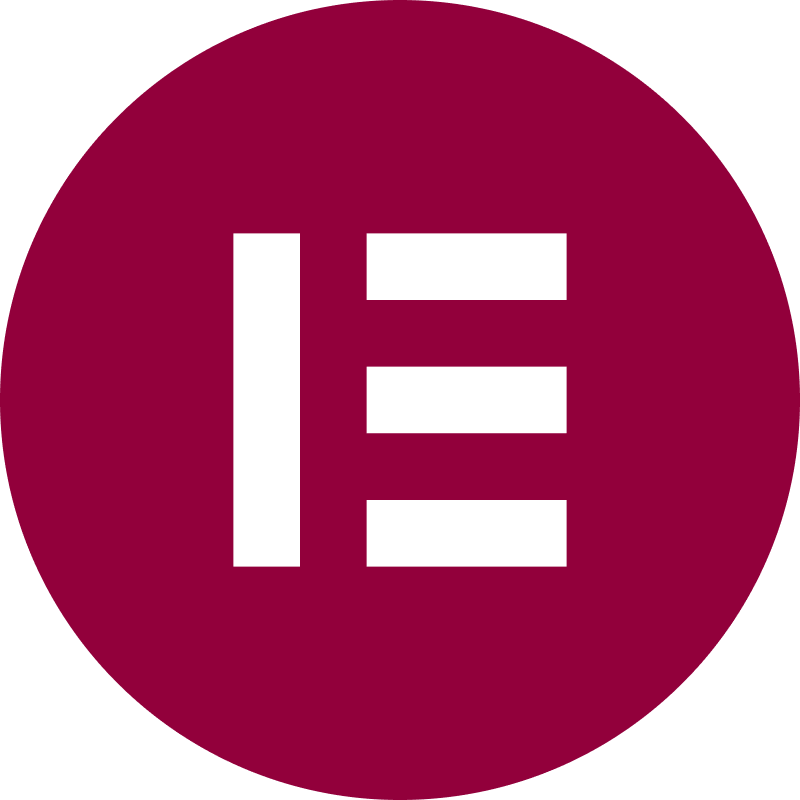In the bustling digital marketplace, your website’s landing page is your virtual handshake – the first and possibly most crucial interaction between your business and potential customers. Crafting that perfect landing page, one that captures attention and converts, is both an art and a science. This brings us to a pivotal question: which tool is best suited to the task? Today, we’re pitting two heavyweights against each other: Elementor and Landingi. Both have their champions and critics, but which one will be the best fit for you? Let’s dive deep into their offerings and find out.
| Elementor | Landingi |
|---|---|
 |  |
| G2 Score – 4.5 out of 5 stars | G2 Score – 4.5 out of 5 stars |
| TrustRadius Score – 8.9/10 | TrustRadius Score – 9.8/10 |
Ease of Use
The Gateway to Creativity
In the world of web design, ease of use doesn’t just mean being able to do something quickly; it means being able to bring your vision to life without the tool getting in the way. Both Elementor and Landingi tout their platforms as intuitive and user-friendly, but how do they really stack up?
Elementor: Intuitive Design Meets Flexibility
Elementor is celebrated for its user-friendly interface, which makes web design accessible to users of all skill levels. The platform’s drag-and-drop editor is the cornerstone of its design philosophy, allowing for immediate visual feedback and ensuring that every adjustment is reflected in real-time. This feature is particularly beneficial for users who are new to web design, as it reduces the learning curve associated with understanding web development concepts.
The interface of Elementor is meticulously organized, ensuring tools and widgets are easily accessible, reducing clutter and potential confusion. For those looking to speed up the design process, Elementor offers a wide selection of templates that can be customized to fit any need or brand identity. This blend of accessibility and depth means that, whether you’re making minor tweaks to a template or crafting a page from the ground up, the process is straightforward and devoid of unnecessary complexity.
Moreover, Elementor’s commitment to ease of use extends beyond the page builder itself. The platform provides extensive documentation, tutorials, and a vibrant community forum where users can find answers, share ideas, and learn new techniques. This ecosystem of support ensures that users have the resources to overcome any obstacles they might encounter in their design journey.
Landingi: Streamlining the Path to Conversion
Landingi takes a streamlined approach to the landing page creation process, emphasizing efficiency and simplicity. The platform’s interface is designed to guide users through each step of building a landing page, from selecting a template to customizing content and launching the page. This guided experience is invaluable for users who prioritize quick turnaround times for their marketing campaigns without sacrificing the quality or effectiveness of their landing pages.
The focus on conversion means that Landingi’s templates are not just varied in design but also optimized for performance, allowing users to start with a foundation proven to engage and convert visitors. Customizing these templates is a hassle-free process, thanks to Landingi’s intuitive drag-and-drop editor, which provides a seamless experience for adding and arranging elements on the page.
For users looking to refine their landing pages further, Landingi offers features like A/B testing within an interface that makes setting up and managing tests simple. This focus on usability ensures that even users with minimal marketing experience can effectively use data-driven insights to enhance their pages.
Features and Functionalities
The Tools at Your Disposal
Elementor: A Vast Array of Creative Tools
Elementor stands out for its extensive collection of features that empower users to craft virtually any website or landing page imaginable. At its core, the drag-and-drop editor facilitates real-time design, allowing for immediate visual feedback and adjustments. This foundational feature is enhanced by a comprehensive widget library, covering basic elements like text and images to more sophisticated functionalities like sliders, forms, and tabs. These widgets serve as building blocks for creative expression, enabling users to mix and match components to achieve the desired look and functionality.
Beyond individual page elements, Elementor offers advanced design capabilities such as responsive design controls, allowing designers to optimize their creations for various screen sizes directly from the editor. The theme builder feature further extends Elementor’s capabilities, granting the ability to design entire themes, including headers, footers, and post templates, ensuring brand consistency across the website.
For users looking to enhance their websites with interactive elements, Elementor Pro introduces motion effects, including parallax scrolling and mouse effects, adding a layer of sophistication and engagement to web designs. Moreover, the platform’s WooCommerce builder and popup builder broaden the scope of what can be achieved, catering to e-commerce sites and conversion-focused strategies.
Landingi: Focused Functionality for High-Converting Pages
In contrast to Elementor’s broad scope, Landingi hones in on landing page optimization with a set of features designed to maximize conversions. The platform’s strength lies in its specialized tools, such as built-in A/B testing capabilities, enabling users to experiment with different page versions to identify the most effective elements in driving conversions. This focus is complemented by a range of pre-designed templates that are optimized for various industries and conversion goals, simplifying the process of creating effective landing pages.
Landingi also emphasizes lead management with features like lead notifications and a built-in CRM, ensuring that generated leads are captured and managed efficiently within the platform. The inclusion of pop-ups and alert bars as integral components of the landing page builder allows for the creation of timely calls-to-action, further enhancing the potential for visitor engagement and conversion.
The platform’s integration capabilities extend its functionality, enabling seamless connections with email marketing services, analytics tools, and webinar platforms, among others. This ensures that landing pages created with Landingi can easily fit into broader marketing ecosystems, facilitating lead nurturing and follow-up campaigns.

Related: Check out our free SEO suite

Integration Capabilities
Enhancing Your Digital Marketing Ecosystem
Elementor: Expansive Integration for Holistic Web Design
Elementor’s approach to integration is comprehensive, designed to ensure that users can easily connect their landing pages and websites with a wide variety of third-party services and applications. This expansive integration capability is a testament to Elementor’s versatility, catering to a broad spectrum of web design and marketing needs.
From email marketing platforms like MailChimp and ConvertKit to CRM systems such as Salesforce and HubSpot, Elementor allows for smooth integration, facilitating the automation of marketing workflows and the efficient management of customer data. Additionally, social media integrations with platforms like Facebook and Instagram enable users to enhance their social marketing efforts directly from their website.
Elementor’s compatibility with WooCommerce stands out for e-commerce users, providing a seamless connection that allows for the design of custom e-commerce elements and pages. This integration ensures that online stores can offer a branded shopping experience that aligns with the rest of the website.
Moreover, Elementor’s open API offers the flexibility for developers to create custom integrations, ensuring that even the most niche or specific tools can potentially be integrated into the Elementor ecosystem. This level of integration capability ensures that Elementor can adapt to the evolving needs of its users, providing a solid foundation for nearly any web project.
Landingi: Targeted Integrations for Optimized Conversion
Landingi’s integration capabilities, while not as broad as Elementor’s, are thoughtfully selected to support its core focus on landing page optimization and conversion. The platform offers direct integrations with key marketing tools and services that are crucial for capturing leads, nurturing customer relationships, and analyzing the performance of landing pages.
Key integrations include email marketing services that allow for the immediate capture and management of leads generated through landing pages. Landingi also supports connections with webinar platforms, payment gateways, and chat tools, enabling users to create a cohesive user experience that supports conversion goals.
Landingi’s focus on analytics and tracking is evident in its integrations with platforms like Google Analytics, Facebook Pixel, and Google Tag Manager. These integrations are critical for users who rely on data to optimize their landing pages and marketing campaigns, providing valuable insights into user behavior and campaign performance.
The platform also includes webhook support, offering a more advanced option for custom integrations. This feature allows for the transfer of data between Landingi and almost any external service, providing flexibility for users with specific integration needs that aren’t covered by direct integrations.
Pricing and Value
Balancing Cost Against Capabilities
| Elementor | Elementor offers a free version with basic widgets and templates. Their paid plans start at $49 per year for one website, including premium widgets, templates, and support, with higher-tier plans available for additional websites and advanced features. |
| Landingi | Landingi’s pricing starts at $29 per month (billed annually) for the Core plan, which includes basic landing page features and a few integrations. Higher tiers offer more features, A/B testing, additional integrations, and subaccounts, with plans available up to $109 per month for agencies and large businesses, plus custom enterprise solutions. |
Elementor: A Tiered Approach to Suit Various Needs
Elementor presents a unique pricing structure that begins with a robust free version, catering to those just starting out or working within tight budget constraints. This free version offers a considerable range of features, making it a viable option for simple projects. However, for those seeking to unlock Elementor’s full potential, including its theme builder, WooCommerce integration, and extensive widget library, Elementor Pro is the next step.
Elementor Pro’s pricing tiers are designed to accommodate different user requirements, from single site owners to agencies managing multiple client projects. Each tier offers the same comprehensive feature set but differs in the number of websites it can be used on, making Elementor scalable and flexible. This approach allows users to select a plan that aligns with their current needs while leaving room for growth.
The value in Elementor’s offering lies not only in its extensive feature list but also in the continuous updates and new capabilities added. Users investing in Elementor Pro gain access to a constantly evolving platform that stays abreast of web design trends and technologies, offering long-term value.
Landingi: Streamlined Packages for Focused Functionality
Landingi’s pricing model is straightforward, with packages that escalate in features and functionalities to match the scaling needs of businesses and marketing professionals. Unlike Elementor, Landingi doesn’t offer a free version, but it provides a more extensive array of built-in conversion tools across all its plans, emphasizing its focus on creating effective landing pages without necessitating external plugins or integrations.
Each of Landingi’s plans is designed with the goal of maximizing landing page performance, including A/B testing, lead notifications, and a wide range of integrations with marketing tools. Higher-tier plans introduce more advanced features, such as webhooks and autoresponder sequences, catering to more sophisticated marketing strategies.
The value proposition of Landingi centers on its specialization in landing page optimization. For users whose primary goal is to efficiently create high-converting landing pages, Landingi offers targeted functionality that can justify its cost, particularly for businesses where landing page performance is closely tied to revenue.
Conclusion
Elementor shines with its broad spectrum of creative tools, offering unparalleled design flexibility and the capability to build comprehensive websites beyond just landing pages. Its extensive widget library, theme builder, and dynamic content functionality make it a powerful ally for those looking to push the boundaries of web design. Coupled with its scalable pricing model, Elementor presents a viable option for individuals and agencies alike, continually adding value through regular updates and an active community.
On the other hand, Landingi’s streamlined approach is laser-focused on optimizing conversion rates, providing a suite of tools specifically engineered for creating effective landing pages. With features like A/B testing, lead notifications, and a rich library of conversion-optimized templates, Landingi empowers marketers and business owners to quickly deploy landing pages designed to achieve specific marketing objectives. The platform’s ease of use and focused functionality make it a strong contender for users prioritizing efficiency and effectiveness in their digital marketing efforts.
Read Next:
- How to Use Paid Advertising for Lead Generation
- Retargeting in Digital Marketing: What It Is and Why It Matters?
- Facebook Ads: An In-Depth Look at Facebook Marketing via Ads
- 15 Types of Advertising Propaganda Used by Advertisers
- 31+ Top Social Media Management tools Compared! (2023)






















Comments are closed.